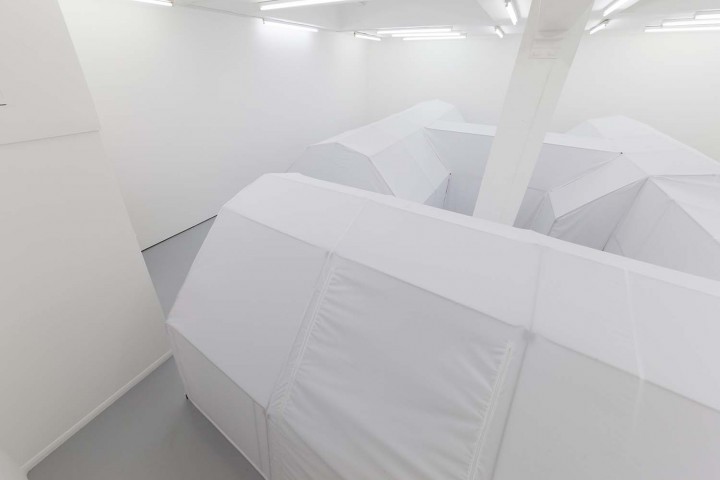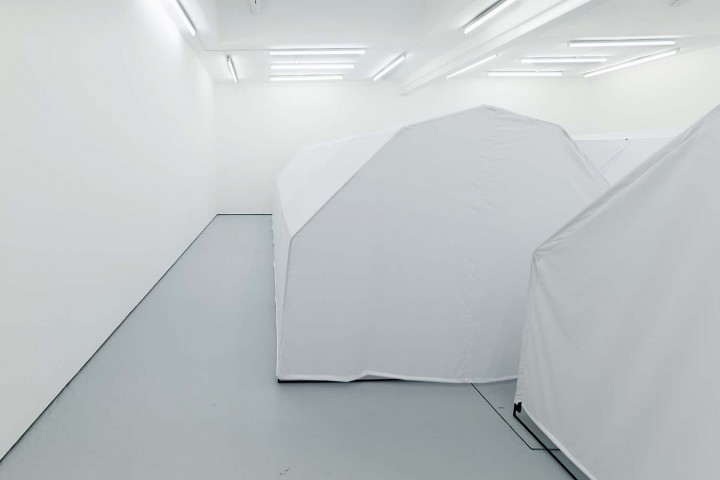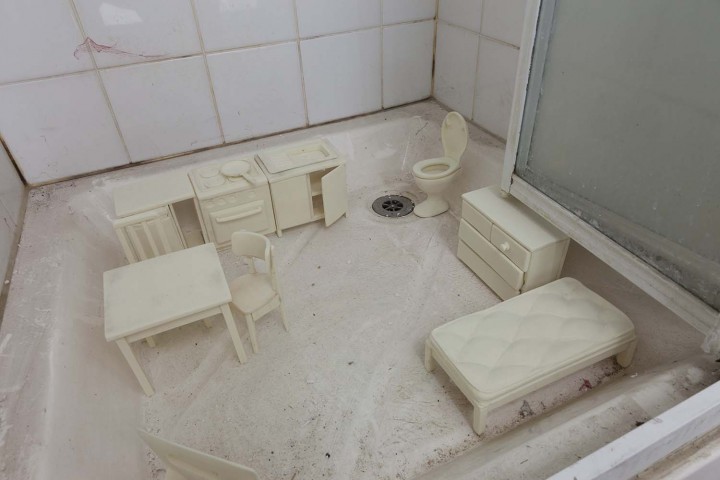On entering the gallery you are greeted by an anemic white light that is intensified by the pristine white walls and multiple neon strip lights. The contrast with its external urban surroundings is stark.
A large tent occupies the gallery, fitting snuggly within the formal and practical constraints of the building’s architecture and offering just enough space for the viewer to navigate its perimeter and locate its entrance. The internal space of the tent feels disconnected from the gallery. The void inside the structure retains the overall minimal aesthetic with the exception of the linear support structure that plots the internal area. As I leave the tent I notice in a corner of the room an old, disused shower unit, exposed temporarily for the purpose of the exhibition. Placed in a soiled basin is a selection of exquisitely detailed hand-crafted miniature items of furniture, modeled on the type you could find in an old pre-IKEA bedsit.
Immersing myself in the obligatory silence of the installation, I focus upon the accompanying exhibition text written by Middleton. The text is imbued with a British sensibility reminiscent of Fawlty Towers or Armando Iannucci; darkly humorous, it charts a hierarchical email exchange between a bureaucratic employer and employee regarding a private sexual encounter. The text artfully encourages the viewer to apply multiple scenarios to what is ostensibly a blank canvas. The simplicity and the potential readings of the architectural structure evokes Mike Kelley’s Educational Complex (1995) and J.G. Ballard’s The Enormous Space (1989), a short story that maps the physical and psychological space within the walls of a house in a London suburb, revealing the fears of urban life and ultimately the darker side of human nature. Both of the aforementioned examples raise questions regarding the conventional and habitual systems that society adopts. Middleton too adopts a similarly ambiguous position as a way of inviting audiences to examine the arrangement of these codified objects collectively. These objects operate like any successful artwork or novel — the more you are willing to immerse yourself within them, the better they become.







